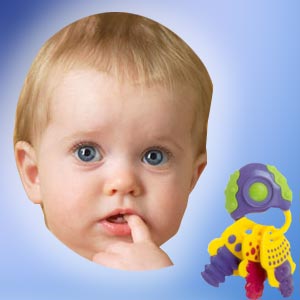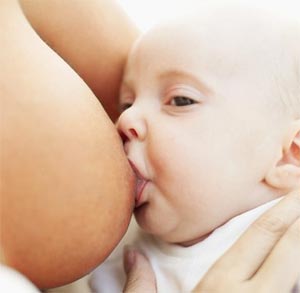Baby Teething

Your little baby takes on a different appearance; from his toothless grin to the emergence of the first tooth through the gums. But the teething process is often accompanied by discomfort and can leave parents and kid frustrated and upset. Find out more about baby teething. Learn to identify symptoms of teething.
Baby teething
The central incisors at the bottom are the first teeth to appear. The upper four teeth (central and lateral incisors) are the next to make an appearance in the baby teething process. It is only after these teeth appear that the first molars make their presence. Typically a child has about 20 teeth on his third birthday - 8 incisors, 8 premolars and 4 secondary molars.
Typical teething milestones
6 months: lower central incisors
8 months: upper central incisors
10 months: lower and upper lateral incisors
14 months: first molars
18 months: canines
25 months: second molars
Teething symptoms
Typically baby teething occurs anywhere between 4 - 7 months. This can vary from child to child. It is not uncommon for a child to sprout the first tooth after completing a year, nor is it very rare for a child to be born with a tooth. Children who are beginning to teeth tend to drool more and may want to chew on whatever they can lay their hands on. The gums may appear tender and swollen.
Some children may feel cranky and irritable; and experience episodes of disrupted sleep. The pain and discomfort is more when the molars make their appearance. Another teething symptom that is noticed in some children is mild fever or diarrhea. Puffy gums are another common symptom during the teething stage. Often the pain from the jaw gets transferred to the ear canal. The child may experience pain in the ears and cheeks. The baby might tug on the ear. There may be temporary refusal to eat food.
Tips to tackle teething problems
- Wipe the drool from the baby's face. You can place a bib under the child's head. The child may develop rashes if the saliva is not regularly wiped clean.
- Ensure good dental hygiene to ensure long-term dental health. Wash or brush the gums with a clean toothbrush and water.
- Do not let the baby sleep with a bottle of milk or pool in the mouth. This can be the precursor to plaque and tooth decay.
- Massaging the gums can provide some relief to the child. You can try rubbing the area with a clean finger wrapped in a washcloth.
- You can give a pacifier or apply teething gel to reduce pain and discomfort.
- Water-filled toys or a bottle of cool water may provide some relief to a child who is suffering from teething problems. You can try pieces of cold apple or peach, celery or carrot stick.
- Teething gels can be applied after consulting the doctor. They usually contain a local anaesthetic and an antiseptic. They give temporary respite with a brief numbing effect.
What not to do!
When giving any medication to the child, do not give anything containing benzocaine. The warning issued by US FDA is about a possible condition called methemoglobinemia, which limits the flow of oxygen throughout the body. Do not give aspirin or rub it on the gums.
Stay away from small hard objects for fear of choking. Plastic objects also pose a health risk.
Top of the Page: Baby Teething
Tags:#teething #baby teething #teething symptom
 Parenting
Parenting Stages of Growth
Precocious Puberty
Nutrition for Kids
Developmental Milestone
Empty Nest Syndrome
Infants
Sudden Infant Death Syndrome
Infant Gas Drops
Milk Allergy in Infants
Infant Reflux
Infant Nutrition
Infant Bathing
Infant Toy
Infant Colic
RSV in Infants
Asthma in Infants
Infant Brain Development
Babies
Baby Milestone
Baby Teething
Toddler Food Recipe
Baby Nursery Furniture
Baby Food Tip
Baby Monitor
Baby Burping
Children Care
 Regular Bedtime for Toddlers
Regular Bedtime for Toddlers Child Care
Kid Summer Camp
Kid Gym
Tween Parenting
Benefits of Breastfeeding
Oppositional Defiance Disorder
Attention Deficit Hyperactivity Disorder - ADHD
Kid Homework Help
Fine Motor Skill
Family Parenting
Single Parenting
Specialty Toy
Child Playhouse
Playgroup
Causes of Child Obesity
Autistic Child
Learning Disability
Toddler Activity
Activities for Toddlers
Child Safety Tip
Child Safety on the Net
Allergies in Toddlers
Top of the Page: Baby Teething
Popularity Index: 101,188

